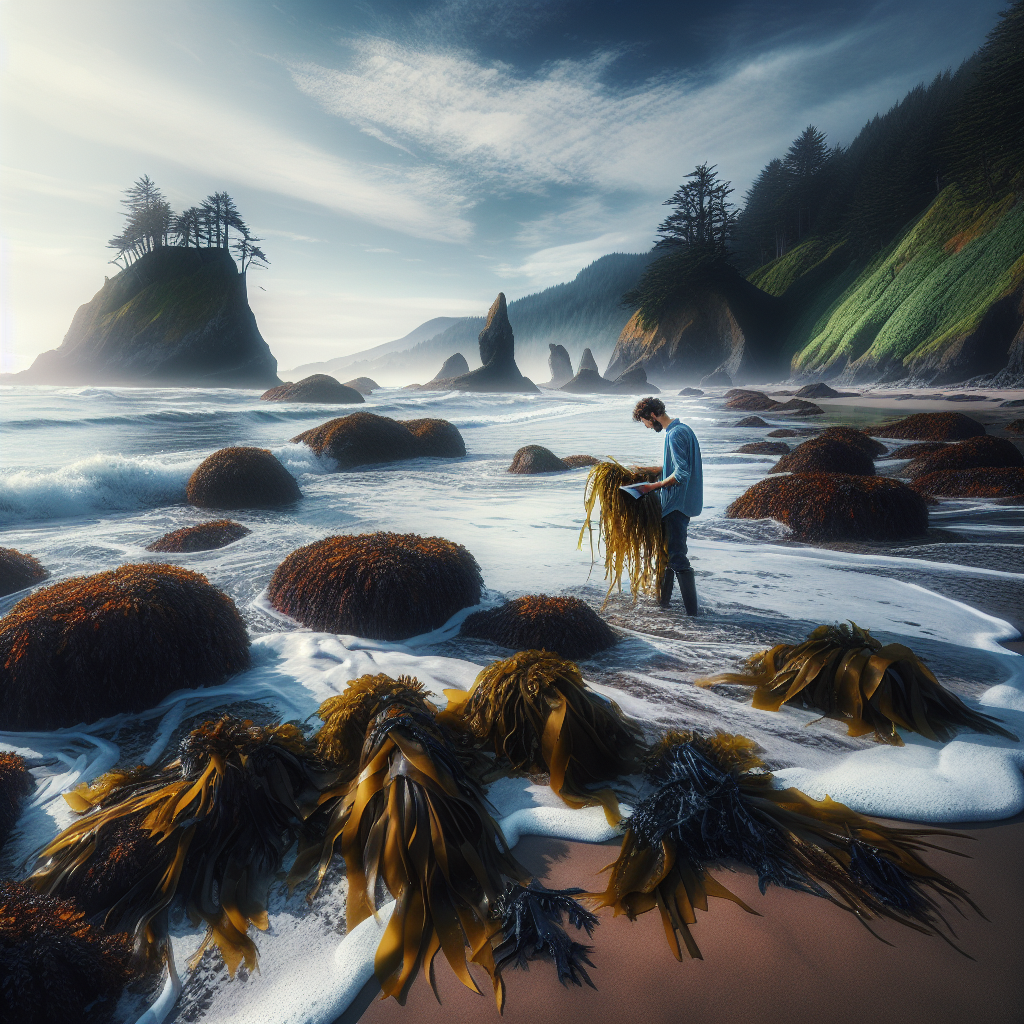Title: Foraging Seaweed on the Oregon Coast: A Beginner’s Guide
Introduction:
Greeting, fellow adventurer! Fancy a dabble in the age-old practice of seaweed foraging? You’ve arrived at the right spot! Nestled between the rugged capes and sandy beaches, the Oregon coast yields a veritable bounty of nutritious seaweeds. Whether you’re a local Oregonian or a curious visitor, uncovering the coast’s aquatic plant gifts can be a delightful addition to your day. Still think seaweed is just the slippery stuff you avoid during a swim? Here’s a tip: the Oregon coast is a hidden gem when it comes to the edible variety!
Choosing Your Seaweed:
One of the first clarifications in the seaweed foraging world is that not all species are equal. On the Oregon coast, one of the most commonly spotted types is the Bullwhip Kelp, also known by locals as Nereocystis leutkeana. This robust brown seaweed is easy to spot throughout the year by its extensive bulb-and-whip structures. Its stipe (the long stem-like part) is particularly tasty when pickled.
Reddish-purple Turkish Towel, often found in the tide pools near Cannon Beach, is another delightful option. This bumpy seaweed bears a strong resemblance to chamois leather, hence the name, and imparts a unique nutty flavor to soups.

The Importance of Timing:
In Oregon, the best times for seaweed foraging are during low tide, which occurs at different times throughout the year. For the utmost successful foraging, consult tide tables at local outdoor shops like Next Adventure in Portland, as they can point to the time of day for the lowest tide. An Oregon insider secret is to set out early in the morning – seaweed is often fresher and more abundant then.
Understanding Regulations and Taking Precautions:
Respecting Oregon’s natural beauty is part of the reason foraging is such a cherished pastime. Before embarking on a seaweed foraging adventure along the Cape Perpetua Scenic Byway or the Samuel H. Boardman State Scenic Corridor, make sure you’re familiar with local regulations. The Oregon Department of Fish and Wildlife provides up-to-date rules about quantities you may harvest.
Bear in mind, the coastal weather is known to locals to shift rapidly in the afternoon. Hence, carry an extra layer or raincoat even on the sunniest mornings. Keep an eye out for the sudden wave known as “sneaker waves” too, a common sea phenomenon on the Oregon coast. Also, never forage on sketchy cliffs or slick rocks. Safety first, fellow forager!
Clamming, Crabbing, and Seaweed Foraging – A Shared Passion:
The communities along the Oregon coast have a deep affection for not only seaweed but also clamming and crabbing. Seasoned locals recommend the town of Waldport on the Alsea Bay for some of the best clamming spots. Integrating these unique coastal flavors can turn foraging into a wholesome culinary experience.
On a related note, a visit to Local Ocean in Newport offers an inspiring peek into how local seafood and seaweed meld into mouthwatering dishes. Who knows, the visit might just whip up ideas for your homemade seaweed-infused recipes!
Conclusion:
Foraging for seaweed along the Oregon coast is more than just a fun activity. It’s a nod to our deep connection with marine life, a testament to our respect for nature’s bounty, and a way to nourish ourselves with food directly harvested from the wild.
Stepping on the sand-grain studded trails of Cape Lookout State Park and feeling the bracing ocean wind as it whips off the waves with a kelp clump in hand – that’s a quintessential Oregon experience. So why not dip into the brine, pull a meal from the sea, and unite with the tradition of Oregon’s seafaring foragers?
Remember, like any skill, seaweed foraging takes some practice – and every botched identification or slip on the seaweed-covered rocks is merely a testament to your journey. As a long-time resident of this beautiful state, there’s nothing quite like the feeling of foraging from nature’s pantry. The Oregon coast is yours to explore, and the seaweeds are waiting. Happy foraging, friend!
